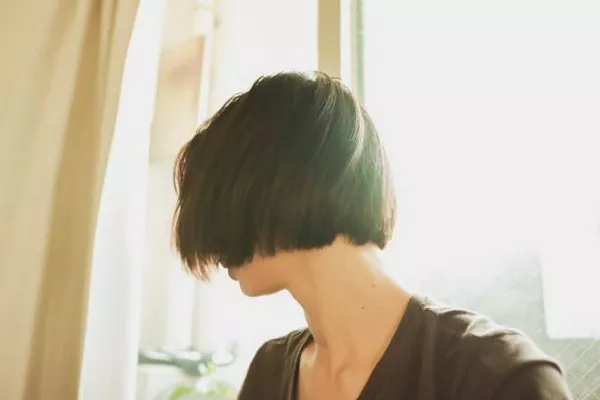A pixie haircut is known for its chic and versatile nature. It’s a short hairstyle that varies widely in length, texture, and style. When it comes to the back of a pixie haircut, the details can be quite intricate. This article delves into the various styles and looks of the back of a pixie cut, providing a comprehensive guide for those interested in this trendy hairstyle.
Characteristics of a Pixie Haircut
Classic Pixie Cut
The classic pixie cut is a timeless style characterized by its short length and layers. It typically features a short back and sides with slightly longer layers on top.
Back View: The back is generally cut short, often tapered to create a clean and structured look. The hair may be blended into the longer layers on top for a seamless transition.
Textured Pixie Cut
A textured pixie cut adds a playful and modern twist to the classic style. It incorporates layers and texturing techniques to create movement and volume.
Back View: The back may feature uneven layers or choppy ends to enhance the textured look. This adds a dynamic feel and can make the haircut appear fuller.
Asymmetrical Pixie Cut
The asymmetrical pixie cut is known for its edgy and bold appearance. It features varying lengths, with one side longer than the other.
Back View: The back may be cut in a way that complements the asymmetry of the sides. This could mean a short, stacked back or a more gradual blend with the longer sections.
Undercut Pixie Cut
An undercut pixie cut involves shaving or cutting a portion of the hair very short, while leaving the top longer.
Back View: The back may showcase a stark contrast between the shaved or very short undercut and the longer layers on top. This creates a dramatic and striking effect.
Popular Styles for the Back of a Pixie Haircut
Tapered Back
A tapered back is a popular choice for a pixie haircut. It involves gradually shortening the length from the top of the head down to the nape of the neck.
Advantages: This style provides a clean and polished look. It can also add a bit of volume to the top, balancing the overall appearance.
Considerations: Tapered backs work well for those who prefer a more classic and understated look. It suits various face shapes and hair textures.
Stacked Back
The stacked back involves layering the hair in a way that creates a stepped or stacked effect.
Advantages: This style adds volume and can enhance the natural shape of the head. It’s ideal for those with fine or thin hair.
Considerations: A stacked back can require regular maintenance to keep the layers looking fresh. It’s best suited for individuals who like a bit of structure in their hairstyle.
Graduated Back
A graduated back features a gradual increase in length from the nape of the neck to the top of the head.
Advantages: This style provides a smooth and seamless transition between different lengths. It’s versatile and can be adapted to various pixie styles.
Considerations: The graduated back is a good option for those who want a more subtle and elegant appearance. It may require frequent touch-ups to maintain the desired shape.
Buzzed Back
A buzzed back involves cutting the hair very short, similar to a military or buzz cut, while keeping the top longer.
Advantages: This style offers a bold and edgy look. It’s low-maintenance and can make a strong statement.
Considerations: The buzzed back is ideal for individuals who are comfortable with very short hair. It may not suit all face shapes or personal styles.
See Also: What Hair Style Suits Small Face
Styling Tips for the Back of a Pixie Haircut
Use of Styling Products
Texturizing Spray: Helps enhance the natural texture and movement of the hair.
Hairspray: Provides hold and can help maintain the shape of the back.
Pomade or Wax: Adds definition and can be used to style the back into various shapes.
Regular Maintenance
Trimming: Regular trims are essential to keep the back looking neat and well-shaped.
Professional Haircuts: Visiting a stylist ensures the back is cut according to the desired style and shape.
Adaptation to Hair Texture
Straight Hair: The back can be styled with sleek lines or soft layers.
Curly Hair: Consider adding volume and texture to enhance the natural curls.
Wavy Hair: A textured or graduated back can complement wavy hair nicely.
Conclusion
The back of a pixie haircut plays a crucial role in defining the overall style and appearance of the haircut. Whether opting for a classic, textured, asymmetrical, or undercut style, the back can be tailored to suit various preferences and hair types. Regular maintenance and the right styling products are key to keeping the back of a pixie cut looking its best. Understanding the different styles and their implications helps in making an informed decision about the perfect pixie cut for you.


